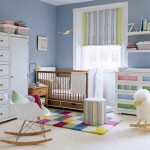Planning your Bedroom
Tuesday, December 9th, 2008Begin by assessing your existing bedroom. What needs are being met, and what is lacking? What do you like or dislike? Do you want more morning light? More storage space? Have your space needs changed? Have the kids moved out so you have extra space? Or have you added to your family, creating new space needs?
 If you’re starting from scratch your options are wide open; you have the luxury of choosing the size and location, even the layout of your bedroom. On the other hand, if you’re dealing with a bedroom that already exists, there is a good chance you will be limited by space and layout restrictions. Although your options may seem limited, there are more alternatives to choose from than one might think.
If you’re starting from scratch your options are wide open; you have the luxury of choosing the size and location, even the layout of your bedroom. On the other hand, if you’re dealing with a bedroom that already exists, there is a good chance you will be limited by space and layout restrictions. Although your options may seem limited, there are more alternatives to choose from than one might think.
Because bedrooms are such personal rooms, not usually seen by many outsiders, they often evolve into one of the most eclectic rooms in the house. A bedroom is often the place where you’ll find collections of personal art and memorabilia, photographs, even a favorite piece of furniture, all tied together into one harmonious look-sometimes depicting a specific style, sometimes just an overall feel or theme. Decorative elements such as style, color, pattern and texture will also play a part in the final look you create.
Often we are limited by budget constraints when remodeling. There are a number of simple improvements that can be made in a bedroom that don’t cost a lot, and will achieve very effective results. Altering the floor plan and redefining the space can make what you already have more usable and efficient. If structural changes aren’t possible at this time, easy updates like replacing old wallpaper, adding recessed lights or installing plush new carpet can breathe new life into an old bedroom. This type of remodel won’t solve any space constriction problems, but the changes are easy and can do almost as much for the look of a bedroom as rearranging the walls-at half the cost.
A structural change is the most effective way to make a dramatic difference in an existing bedroom. A new bay window or a walk-in closet can change the entire feel of the room.


